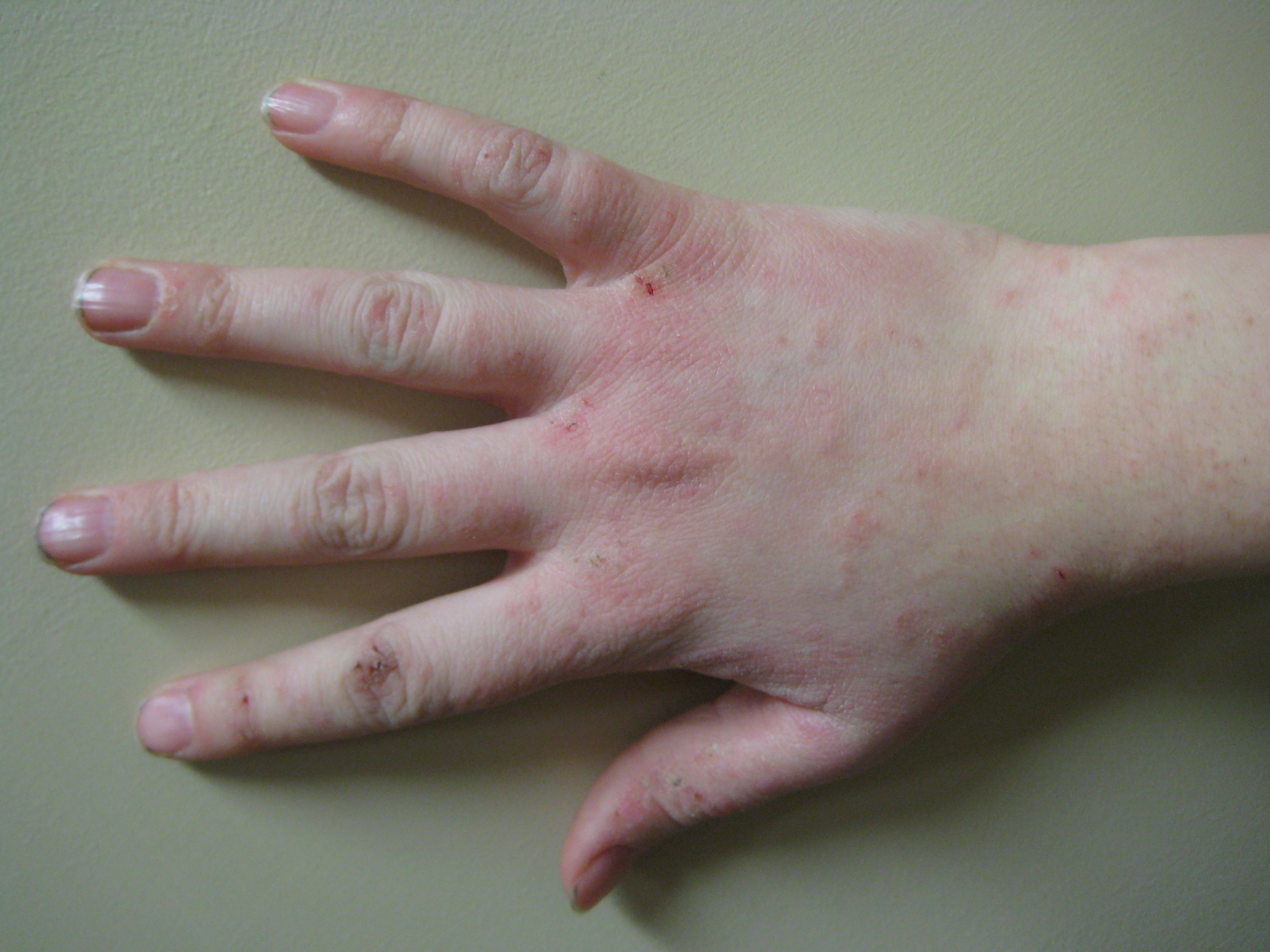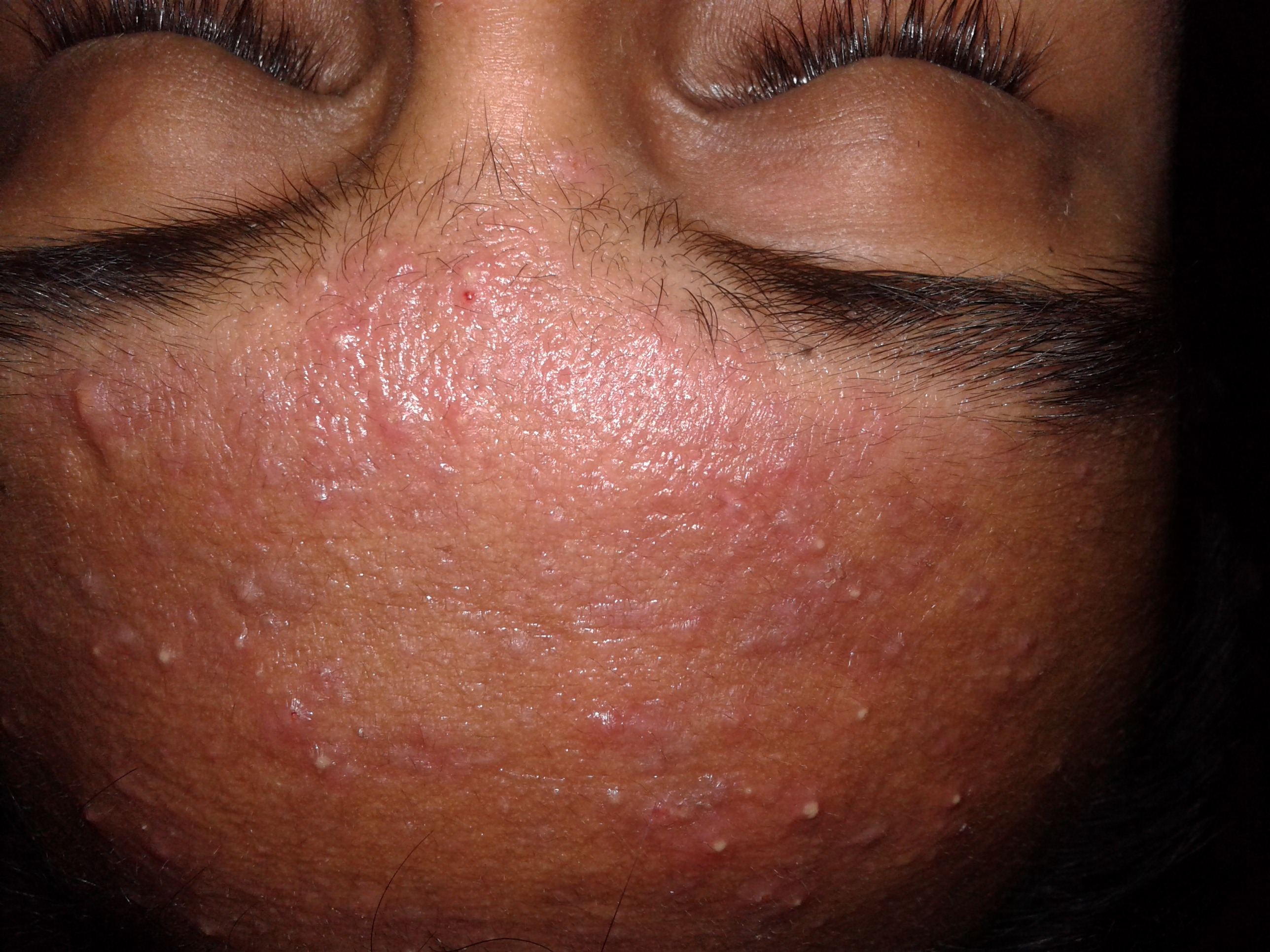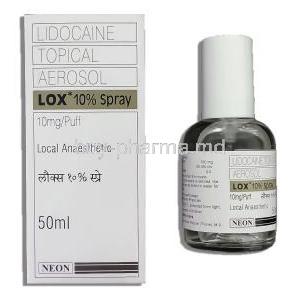Flutibact Oint
- I. Introduction to Flutibact Ointment
- II. Composition of Flutibact Ointment
- III. How Flutibact Ointment Works
- IV. Primary Uses of Flutibact Ointment (Fusidic acid cream uses)
- V. Off-label Uses of Flutibact Ointment
- VI. Dosage and Administration of Flutibact Ointment
- VII. Administration to Special Populations
- VIII. Side Effects of Flutibact Ointment
- 8.1 Common Side Effects
- 8.2 Rare or Severe Side Effects
- IX. Important Precautions and Warnings
- X. Contraindications of Flutibact Ointment
- XI. Drug Interactions with Flutibact Ointment
- XII. Careful Administration of Flutibact Ointment
- XIII. Storage Guidelines for Flutibact Ointment
- XIV. Overdose and Handling Precautions
I. Introduction to Flutibact Ointment
Overview of Flutibact Ointment
Flutibact Ointment is a skin treatment that effectively combines the actions of an antibiotic and a corticosteroid to address skin issues caused by bacterial infections and inflammation.
Therapeutic Class and Classification
This ointment falls under the category of antibiotics and corticosteroids used for purposes combining fusidic acid (an antibiotic) and fluticasone (a corticosteroid). This unique combination allows it to effectively address both skin infections and inflammation.
Common Applications and Purpose of Use
Flutibact is often recommended for the treatment of skin infections, like impetigo and folliculitis, as well as infected dermatitis. Its main goal is to eradicate bacteria and alleviate inflammation, swelling, and itching linked to skin conditions. It proves effective in preventing bacterial infections in already inflamed skin.
II. Composition of Flutibact Ointment
Active Ingredients in Flutibact
The active components of Flutibact Ointment are fusidic acid and fluticasone. Fusidic acid is a bacteriostatic antibiotic that inhibits bacterial protein synthesis, while fluticasone is a potent corticosteroid that alleviates inflammation.
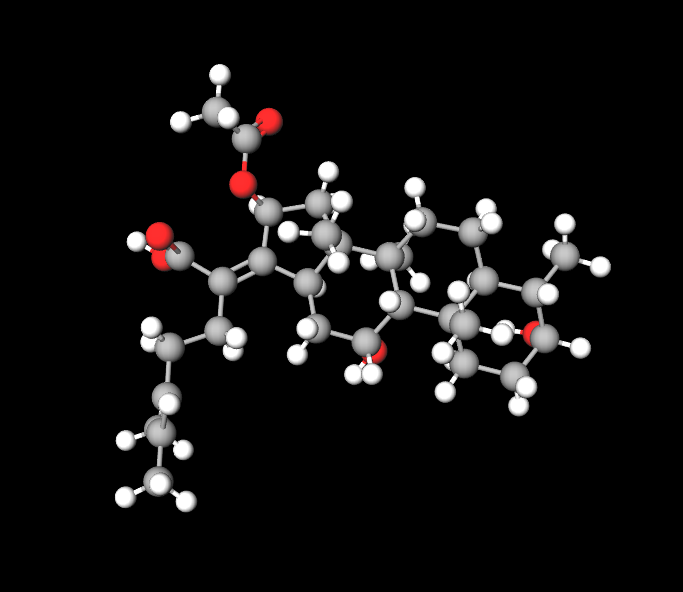
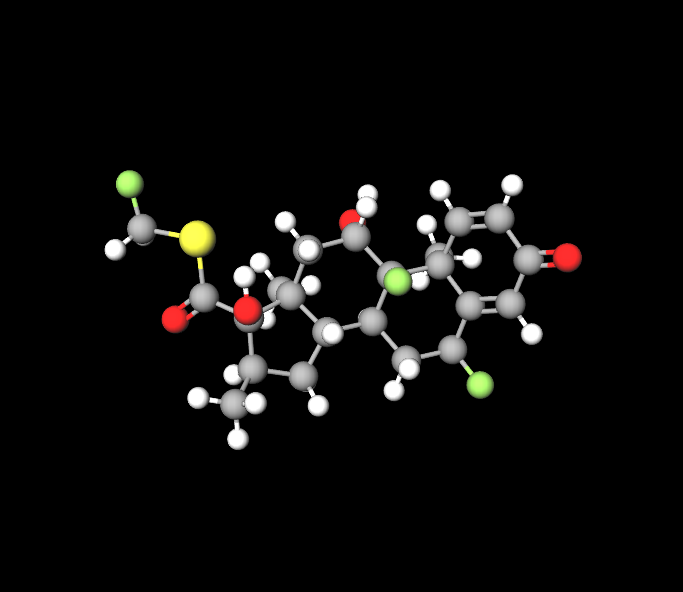
Role of Fusidic Acid and Fluticasone in the Formulation
Fusidic acid specifically targets Gram-positive bacteria, including Staphylococcus aureus, which is often responsible for skin infections. Fluticasone, on the other hand, suppresses the immune response that causes skin inflammation, reducing redness, swelling, and discomfort. Together, they create a formidable defense against both infection and inflammation.
Additional Inactive Ingredients
Flutibact consists of elements but also includes various inactive components that contribute to the ointment's stability and absorption properties; such components could encompass paraffin oil and purified distilled waters, alongside cetostearyl alcohol, to facilitate easy application and improve the absorption capacity allowing the active agents to seep into the skin effectively.
Fusidic acid and betamethasone valerate cream
Topical betamethasone is applied to alleviate redness and discomfort associated with skin issues such as itching and swelling. Betamethasone foam is utilized explicitly for scalp concerns. This medication belongs to the cortisone medicine category known as corticosteroids.
Mometasone furoate and fusidic acid cream
Mometasone furoate and fusidic acid can help treat skin conditions like eczema and dermatitis that are also infected with bacteria.
Fluticasone salmeterol
Fluticasone and salmeterol are combined to manage asthma symptoms and enhance breathing.
Fluticasone vilanterol
The fluticasone and vilanterol combination is prescribed to manage wheezing and other symptoms, like shortness of breath and chest tightness linked to asthma and COPD in adults—a range of lung conditions, such as bronchitis and emphysema.
Azelastine fluticasone
The combination nasal spray of Azelastine and fluticasone is prescribed for alleviating symptoms, like an runny nose and sneezing that are triggered by allergies.
Flonase vs fluticasone
Fluticasone is a medicine in the form of a nasal spray that is used to alleviate symptoms caused by allergies, such as nasal congestion or blockage due to itchiness or runniness in the nose region, by lessening inflammation levels there. A known brand name for fluticasone is Flonase.
Fluticasone vs budesonide
Flonase is considered a steroid compared to budesonide; nevertheless, both are equally effective in relieving inflammation and addressing allergy symptoms like congestion, itching, and watery eyes.
III. How Flutibact Ointment Works
Mechanism of Action of Fusidic Acid
Fusidic acid operates by disrupting the process of bacterial protein production, which effectively stops the growth of bacteria. Unlike medications that kill the bacteria outright, fusidic acid works by stopping them from reproducing, giving the body's natural defenses a chance to eliminate the infection on their own.

Mechanism of Action of Fluticasone
Fluticasone works by reducing inflammation in the body by blocking the release of substances that trigger inflammation, like prostaglandins and leukotrienes. This helps manage symptoms such, as swelling, redness and itching effectively.
Combined Effect of Antibiotic and Corticosteroid
The synergistic action of fusidic acid and fluticasone ensures both the eradication of infection and the suppression of inflammation. This combination allows for more rapid healing and minimizes the risk of secondary infections, a common issue in untreated or improperly treated skin conditions.
IV. Primary Uses of Flutibact Ointment (Fusidic acid cream uses)
Treating Bacterial Skin Infections
Flutibact Ointment is primarily used to treat bacterial skin infections, such as impetigo, a highly contagious infection common among children. It is also effective against other bacterial infections, such as folliculitis and infected eczema.
Management of Inflammatory Dermatoses
The ointment is beneficial in managing inflammatory dermatoses complicated by bacterial infections. Conditions like atopic dermatitis and contact dermatitis, which often involve itching and swelling, can greatly benefit from Flutibact's anti-inflammatory and antibacterial properties.
Conditions Where Flutibact Is the First-Line Treatment
When dealing with skin infections that also show signs of inflammation on the skin surface, Flutibact is commonly recommended as the initial treatment option. Its effectiveness in addressing infections caused by the bacterium Staphylococcus aureus makes it a favored choice among healthcare professionals.
V. Off-label Uses of Flutibact Ointment
Potential Off-label Use for Acne
While authorities have not specifically approved Flutibact for treating acne, it has been utilized off-label to address severe acne that comes with bacterial infections. Its ability to reduce redness and swelling due to its anti-inflammatory properties has proven beneficial, and the fusidic acid component helps combat the bacterial growth commonly linked to acne.
Use in Chronic Skin Conditions Like Eczema
Flutibact is often used to treat long-term conditions, like eczema, when additional bacterial infections arise alongside the issue to manage flare-ups and prevent infection outbreaks.
Other Possible Dermatological Uses Under Physician Guidance
Flutibacts' dual action mechanism may provide benefits for conditions such as psoriasis or seborrheic dermatitis; however, it is important to use it in these situations only under the guidance and supervision of a healthcare professional.
VI. Dosage and Administration of Flutibact Ointment
Standard Dosage Guidelines for Adults and Children
Adults and children are usually advised to apply a layer of the ointment to the area 2 to 3 times a day for common skin conditions like these can vary depending on how severe they are.
Frequency of Application and Treatment Duration
The cream is typically used for a week to ten days, depending on how it works for you.The treatment might be extended in situations, but only under the guidance of a healthcare professional.
Specific Instructions for Effective Application
Ensure that the affected area is clean and dry before applying the ointment. Use a thin product layer and gently massage it into the skin until fully absorbed. Avoid applying to mucous membranes or open wounds unless instructed by a healthcare provider.
Adjustments in Dosage for Elderly Patients
As people age, they might need changes in their medication doses because their skin becomes thinner, and they are more likely to experience side effects, like skin thinning issues. It's essential to keep an eye on them when they use the medication for a long time.
Dosage Recommendations for Use in Children
When using the ointment for children's skin care needs specifically tailored for kids, suggest using a frequency or quantity to account for their skin's sensitivity and to prevent excessive corticosteroid absorption into their system due to prolonged usage.
VII. Administration to Special Populations
Administration to Elderly Patients
Elderly individuals should be carefully monitored for skin thinning, as it can increase their vulnerability to the application's side effects; using the ointment sparingly is recommended. Any indication of skin irritation or thinning should be promptly reviewed by a healthcare professional.
Administration to Pregnant Women
The safety of Flutibact during pregnancy is not well established. While it may be prescribed in some instances, its use should be carefully weighed against potential risks, particularly in the first trimester.
Potential Risks and Benefits for Pregnant Women
While the chances of fluticasone being absorbed into the system are minimal but present in some cases, it's crucial to weigh the advantages of treatment in handling infections against any risks to the unborn baby's development.
Administration to Nursing Mothers
There isn't data on how fusidic acid and fluticasone pass into breast milk, so it's recommended that breastfeeding moms steer clear of using the ointment on their breasts to reduce any potential exposure for their babies.

Administration to Children
Flutibact is safe for kids to use; it's important not to apply it and to try to keep the treatment duration as short as possible to avoid any long-term issues.
VIII. Side Effects of Flutibact Ointment
Overview of Common and Rare Side Effects
The effects caused by Flutibact can vary from minor to severe and impact individuals differently. Most people handle it without issue. Some may encounter irritation at the application site or develop more concerning issues such as thinning skin.
Possible Allergic Reactions to Active Ingredients
Patients who are sensitive to fusidic acid or fluticasone might develop reactions, like itching or skin rashes.
8.1 Common Side Effects
Skin Irritation at the Application Site
Observed side effects of skin irritation, such as redness or itching, may occur at the application site; however, these symptoms are typically temporary and tend to diminish with ongoing use.
Burning or Itching Sensation
After you put on the ointment you might feel a burning or itching sensation. It should go away soon and lessen over time.
Redness and Swelling
Risk of Secondary Fungal Infections
Extended usage may heighten the chance of developing infections in areas where skin folds occur primarily because the corticosteroid element suppresses regular immune responses.
8.2 Rare or Severe Side Effects
Skin Thinning and Delayed Wound Healing
Regular use of Flutibact can cause the skin to become thinner, a process called atrophy, and might hinder its natural healing process.
Systemic Absorption Leading to Hormonal Side Effects
Sometimes, with long-term use of fluticasone, it might be absorbed by the body. It causes side effects like adrenal suppression, which is dangerous, especially for children.
Adverse Reactions Due to Long-term Use
Prolonged use may lead to issues like stretch marks, spider veins, and changes in skin pigmentation; if these symptoms arise, stopping or decreasing usage might be necessary.
IX. Important Precautions and Warnings
Avoiding Use on Open Wounds or Mucous Membranes
Flutibact Ointment should not be used on cuts or open wounds or on areas where mucous membranes are present, such as the interior of the mouth or eyes. It could cause increased irritation or unwanted absorption of its ingredients, leading to potential negative effects. Use caution when using the ointment.
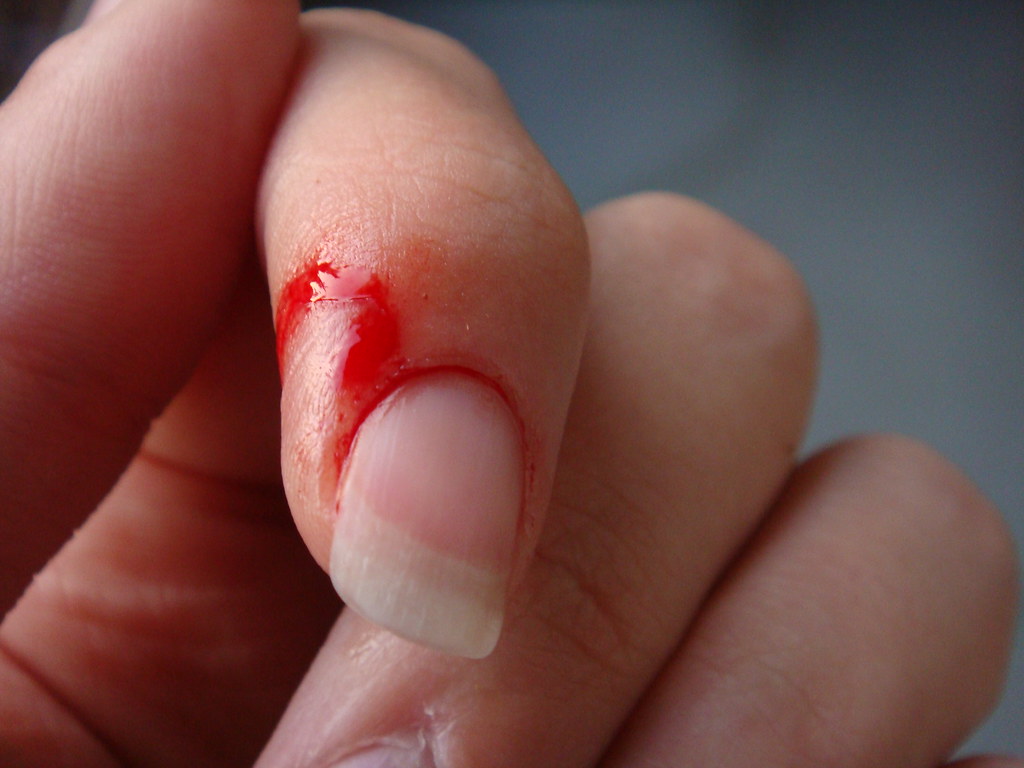
Proper Hygiene and Infection Control Measures
It's super important to keep things clean when using Flutibact to prevent infections from spreading. Remember to wash your hands after putting on the ointment and be extra careful with stuff like impetigo. Try not to touch other parts or pass them on to anyone else. Using towels and clean clothes while you're treating yourself can help prevent the infection from spreading.
Limiting Application Duration to Avoid Resistance
Flutibact contains an antibiotic, and as with any antibiotic therapy, overuse or misuse can lead to the development of bacterial resistance. Therefore, it is recommended to adhere strictly to the prescribed duration of use, generally not exceeding 7-10 days. Prolonged or indiscriminate use can result in reduced efficacy of the medication and potential resistance to fusidic acid.
Precautions for Patients with Chronic Health Conditions
Individuals with long-term health issues like diabetes or weakened immune systems should be careful when using Flutibact. Fluticasone affects their immune response and increases susceptibility to infections or slower healing processes. If you have existing health conditions, it is important to seek guidance from a healthcare professional for recommendations.
Fluticasone interactions
When Fluticasone is taken with Acetylsalicylic acid, the chances of experiencing effects may rise in severity. This combination can also boost fluticasone's metabolism.
X. Contraindications of Flutibact Ointment
Absolute Contraindications for Use
Patients who have allergies to acid or fluticasone should avoid using Flutibact Ointment due to the risk of allergic reactions that may occur upon application and may require immediate discontinuation.
Conditions Where Flutibact Should Not Be Used
Certain skin conditions, such as viral, fungal, or tubercular infections, are unsuitable for Flutibact treatment. The corticosteroid in the ointment can suppress immune function, potentially worsening these conditions. It should also be avoided in cases where skin thinning (atrophy) is already present due to other treatments or health issues.
Allergies to Active or Inactive Ingredients
If someone has allergies to the ingredients in Flutibact or its components, such as parabens or cetostearyl alcohol known allergies) they should avoid using this product to prevent potential allergic reactions, like redness and itching, that may require immediate medical care.
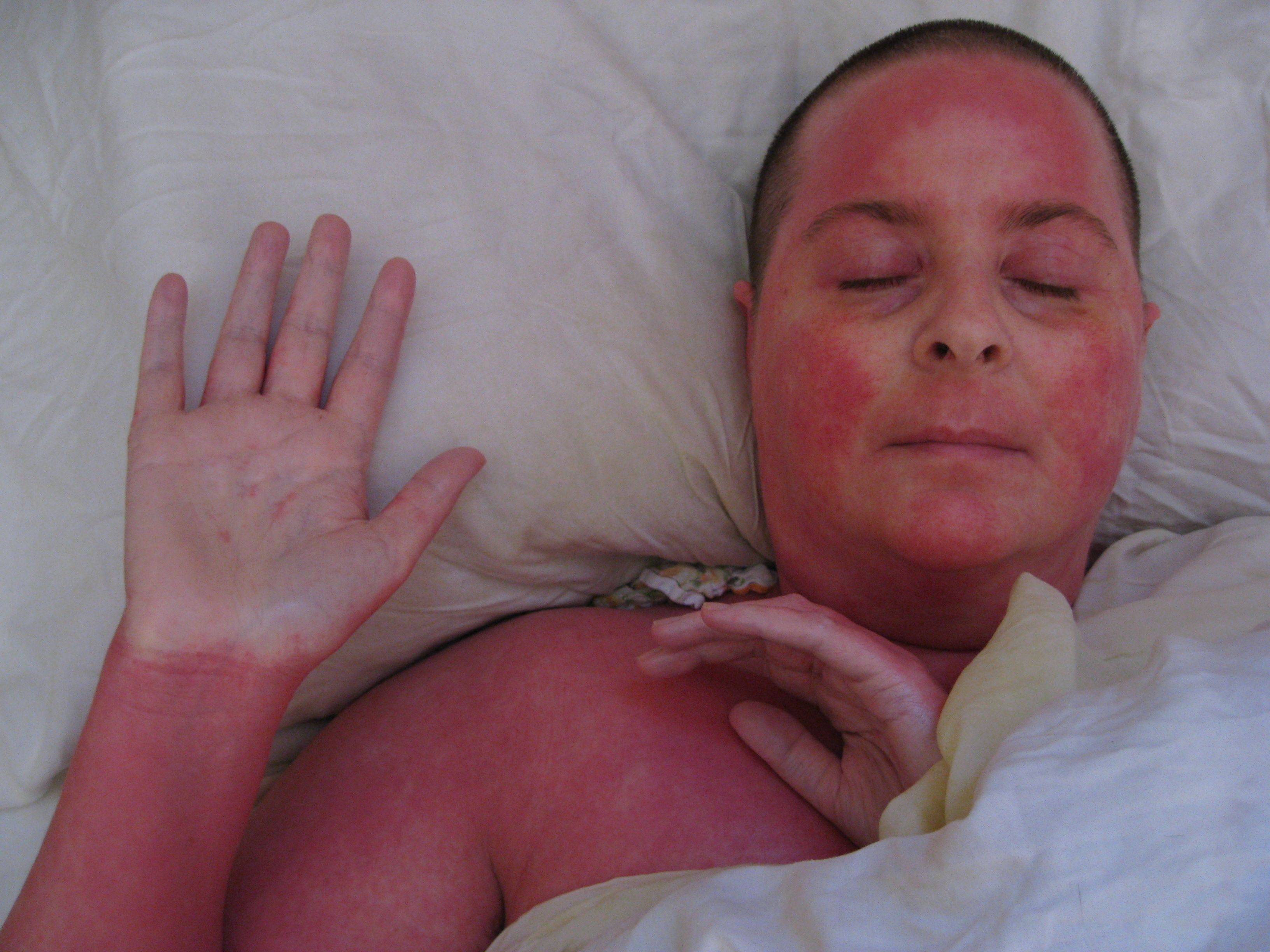
XI. Drug Interactions with Flutibact Ointment
Known Drug Interactions and Their Clinical Implications
While Flutibact is meant to be used on the skin surface it's important to be cautious, about interactions with other medications that affect the entire body system. When corticosteroids like fluticasone are combined with drugs containing steroids there may be a chance for side effects such as hormonal disturbances. Moreover using Flutibact at the time as other topical antibiotics could result in decreased effectiveness, for either product. Heighten the likelihood of experiencing adverse effects.
Combining with Other Topical Treatments or Systemic Medications
Before incorporating Flutibact with treatments that include antibiotics or steroids into your skincare routine, it's advisable to seek advice from your healthcare provider, as overlapping multiple products could result in excessive exposure to particular active components, causing irritation or diminishing efficacy. Additionally when using medications, like immunosuppressants or oral steroids simultaneously with fluticasone it is important to be cautious as their effects may interact and intensify.
Interaction with Over-the-counter Skincare Products
Using Flutibac Ointment alongside some over-the-counter skincare items with chemicals or alcohol may lead to irritation or lessen the ointment's calming effects. Avoiding skincare products while using Flutibac is recommended to achieve the outcomes and reduce negative responses during treatment.
XII. Careful Administration of Flutibact Ointment
Monitoring for Prolonged Use
Although using Flutibact for a period is usually considered safe, extended usage may result in complications primarily due to the content it contains. Patients should be closely monitored for any indications of skin thinning or the development of stretch marks or if the infection worsens. In case these symptoms manifest themselves; it might become imperative to halt or modify the treatment regimen under the guidance and supervision of healthcare professionals.
Preventing the Risk of Bacterial Resistance
In order to avoid the rise in resistance, it is crucial to follow the instructions on how to use Flutibact and complete the course as prescribed. Misusing it or stopping early may lead to the growth of bacteria, which could complicate treating infections.
Care in Patients with Pre-existing Skin Conditions
People who have existing skin problems, such as psoriasis or eczema, should be careful when using Flutibact ointment. While it can treat skin, the corticosteroid in it could worsen other ongoing skin issues they may have already been dealing with for a long time. It's crucial to seek advice from a healthcare professional before using it to make sure it's safe for individuals with conditions.
XIII. Storage Guidelines for Flutibact Ointment
Optimal Temperature for Storage
Remember to store Flutibact Ointment where the temperature stays below 25°C (77°F). Keeping it away, from heat or freezing conditions is essential to preserve its quality and ensure it works effectively and safely.
Effects of Improper Storage on Efficacy
Storing the ointment incorrectly by exposing it to sunlight or humid conditions may cause the active ingredients to break down and decrease their effectiveness. This could result in treatment. Prolong the period of infection or inflammation. Close the cap after each use to avoid contamination or evaporation issues.
Shelf Life and Expiration Date Considerations
Due to their shelf life, Flutibact Ointments' effectiveness decreases after a period; patients must verify the expiration date before application and dispose of it when it has expired to avoid potential skin irritation or infections that could result from using expired ointment.
XIV. Overdose and Handling Precautions
Signs and Symptoms of an Overdose
Although it's unlikely to overdose on cream like Flutibact, topically applied to the skin excessively or for prolonged periods might cause systemic side effects such as increased skin thinning and hormonal imbalances. Extended suppression of the system response can result in symptoms like Cushing's syndrome, marked by weight gain, high blood pressure, and alterations in the skin.
Immediate Actions to Take in Case of Accidental Ingestion or Over-application
If you accidentally swallow Flutibact, you should seek help right away. Symptoms that may occur from ingestion include feeling sick, throwing up, or having stomach problems. If you apply ointment, simply wipe off the excess and clean the area with soap and water. If you notice any reactions, it's important to seek advice promptly.
Safe Handling and Disposal of the Ointment
For safety purposes, it's important to handle Flutibact Ointment with care and avoid contact with eyes or mucous membranes unnecessarily. Make sure to dispose of any expired ointment according to local regulations to prevent environmental contamination. It's best not to flush it down the toilet or toss it in regular household trash bins.
Flutibact Oint FAQ
- Why fusidic acid ointment?
- Why fusidic acid cream is used?
- Where can i use fusidic acid cream?
- Where to use fusidic acid cream?
- When to use fusidic acid cream?
- What does fusidic acid cream do?
- How to use fusidic acid cream IP?
- How to apply fusidic acid cream?
- How fusidic acid works?
- How does fusidic acid work?
- How fusidic acid cream works?
- Can fusidic acid cream be used for wounds?
- Can fusidic acid be used for acne?
- Can fusidic acid cream be used on face?
- Can fusidic acid cream be used for acne?
- What is fluticasone used for?
- What is fluticasone cream used for?
- Is fluticasone a steroid or antihistamine?
- Is it bad to use fluticasone everyday?
- How to apply fluticasone?
- Can fluticasone be used long term?
- Is fluticasone a strong steroid?
- Why fusidic acid ointment?
- Why fusidic acid cream is used?
- Where can i use fusidic acid cream?
- Where to use fusidic acid cream?
- When to use fusidic acid cream?
- What does fusidic acid cream do?
- How to use fusidic acid cream IP?
- How to apply fusidic acid cream?
- How fusidic acid works?
- How does fusidic acid work?
- How fusidic acid cream works?
- Can fusidic acid cream be used for wounds?
- Can fusidic acid be used for acne?
- Can fusidic acid cream be used on face?
- Can fusidic acid cream be used for acne?
- What is fluticasone used for?
- What is fluticasone cream used for?
- Is fluticasone a steroid or antihistamine?
- Is it bad to use fluticasone everyday?
- How to apply fluticasone?
- Can fluticasone be used long term?
- Is fluticasone a strong steroid?
Why fusidic acid ointment?
Fusidic acid functions as an antibiotic by inhibiting the growth of bacteria in order to combat infections like skin conditions such as cellulitis and impetigo, as well as eye ailments, like conjunctivitis, characterized by redness and itchiness.
Why fusidic acid cream is used?
It is commonly employed to address infections, such as skin conditions such as cellulitis and impetigo, and eye issues, like conjunctivitis (red and itchy eyes).
Where can i use fusidic acid cream?
It is commonly employed in the treatment of infections, like skin issues such as cellulitis and impetigo well as eye ailments, like conjunctivitis (red and itchy eyes).
Where to use fusidic acid cream?
It is commonly employed to address infections, such as skin issues such as cellulitis and impetigo, and eye infections, like conjunctivitis (inflamed and itchy eyes).
When to use fusidic acid cream?
You should typically apply acid cream. Ointment three or four times daily as your pharmacist or doctor directs in case of uncertainty.
What does fusidic acid cream do?
Antibiotic fusidic acid functions by halting the growth of bacteria in the body. It is commonly prescribed for treating infections like skin issues such as cellulitis and impetigo, as well as eye conditions like conjunctivitis, which causes redness and itchiness in the eyes.
How to use fusidic acid cream IP?
Remember to wash your hands before and after applying acid cream or ointment unless you're specifically treating your hands with it! When applying the cream or ointment to the area, gently rub it in with a layer, and take care not to get it in your eyes if you're using it on your face.
How to apply fusidic acid cream?
Remember to wash your hands before applying acid cream or ointment unless you're explicitly treating them with it. In that case, wash them afterward. Apply a layer of the cream or lotion to the area and gently massage it in, being cautious not to get it near your eyes if you're using it on your face.
How fusidic acid works?
The medication known as acid acts as a type of antibiotic that inhibits the growth of bacteria and supports the system in tackling infections effectively by disrupting bacterial protein production through blocking elongation factor G (EF G)s movement, from the ribosome.
How does fusidic acid work?
The function of acid as an antibiotic is to inhibit bacterial growth. The immune system effectively and efficiently eliminates the infection from the body system by disrupting the synthesis of bacterial proteins through the prevention of elongation factor G (EF G) 's movement from the ribosome in a targeted manner.
How fusidic acid cream works?
The antibiotic known as acid functions by inhibiting the growth of bacteria in the body. It is employed in combating infections like skin conditions such as cellulitis and impetigo or eye issues like conjunctivitis (characterized by redness and itchiness in the eyes).
Can fusidic acid cream be used for wounds?
Sure! It's perfectly okay to apply fucidin cream or Fusidic acid to damaged skin. Acid-based creams can be beneficial in treating infections and eliminating bacteria in cuts, surface wounds, and other situations(such as impetigo), especially when the skin is compromised or broken.
Can fusidic acid be used for acne?
Acne or pimples occur when bacterial infections affect the skin; Fuscidic Acid is considered a treatment option for this condition in some cases, according to research. However, it isn't deemed extremely effective against acne-causing bacteria known as Cutibacterium acnes, commonly found in acne vulgaris treatment applications.
Can fusidic acid cream be used on face?
Your skin could become more sensitive to this medication over time; avoid prolonged use on your face unless specifically advised by your doctor. You should refrain from applying Fucidin H cream to wounds or delicate areas, like the nostrils, ears, lips, or genitals, unless instructed otherwise by a healthcare professional.
Can fusidic acid cream be used for acne?
Acne or pimples form when bacteria infect the skin. Fusidic Acid is effective in treating this condition, according to studies that suggest it may not be very successful against Cutie Bacterium Acnes specifically. This topical remedy is sometimes utilized in managing acne vulgaris.
What is fluticasone used for?
Fluticasone nasal spray is commonly utilized for alleviating symptoms such as sneezing and itchiness in the nose caused by hay fever or addressing rhinosinusitis in adults with or without polyps (CRSwNP).
What is fluticasone cream used for?
Fluticasone topical is commonly applied to alleviate inflammation and alleviate itching. It helps to reduce redness and dryness while addressing scaling linked to skin conditions such as psoriasis and eczema.
Is fluticasone a steroid or antihistamine?
Fluticasone belongs to a class of medications known as steroids and corticosteroids. It should not be confused with anabolic steroids.
Is it bad to use fluticasone everyday?
Please consult a doctor before using it for more than one month. If your condition worsens upon lowering the dosage, you might consider increasing it. When your doctor prescribes fluticasone nasal spray or nasal drops, they will provide instructions on the frequency of use and when to adjust the dosing schedule.
How to apply fluticasone?
Apply the cream or ointment thinly to the skin area. Gently massage it in following the direction of hair growth for best results. Make sure to cover all affected areas rather than just focusing on the severe spots, and avoid applying to any cuts or broken skin—be cautious with that part!
Can fluticasone be used long term?
Long-term use of glucocorticoids such as fluticasone (Flonase) might lead to a reduction in bone mineral density (BMD). This decrease in BMD could result in bone weakening or the development of osteoporosis.
Is fluticasone a strong steroid?
Fluticasone, a corticosteroid, is widely used as a treatment for a range of respiratory and skin conditions.
Why fusidic acid ointment?
Fucidic acid functions as an antibiotic by halting the growth of bacteria to address infections like skin conditions such as cellulitis and impetigo or eye afflictions such as conjunctivitis ( itchy eyes).
Why fusidic acid cream is used?
It is commonly used to cure infections, such as skin issues such as cellulitis and impetigo, and eye problems, like conjunctivitis ( itchy eyes).
Where can i use fusidic acid cream?
It is commonly employed for dealing with infections, such as skin issues such as cellulitis and impetigo. It is also used for eye infections like conjunctivitis (redness and itching in the eyes).
Where to use fusidic acid cream?
It is commonly employed in the treatment of infections, such as skin ailments like cellulitis and impetigo, and eye conditions, like conjunctivitis (characterized by redness and itchiness in the eyes).
When to use fusidic acid cream?
You typically apply acid cream or ointment three to four times daily, but it's always best to double-check with your pharmacist or doctor if you're uncertain about the frequency.
What does fusidic acid cream do?
Fusidic acid is an antibiotic that prevents bacteria growth and is prescribed for infections, like skin conditions such as cellulitis and impetigo, as well as eye ailments, like conjunctivitis (red and itchy eyes).
How to use fusidic acid cream IP?
Remember to wash your hands before and after applying acid cream or ointment unless you're treating your hands with it, too! Spread a layer of the cream or ointment on the area and softly massage it in—just be cautious not to get it near your eyes if you're using it on your face.
How to apply fusidic acid cream?
Remember to wash your hands before and after applying acid cream or ointment, unless you're treating your hands directly with it! Gently apply a layer of the cream or ointment to the area, and ensure to avoid contact with your eyes if using it on your face.
How fusidic acid works?
The purpose of acid is to inhibit bacteria from growing as the immune system fights off the infection at the time.
How does fusidic acid work?
The medication fusidic acid acts as a bacterium-slowing antibiotic, halting growth as the body's immune system fights off the infection it causes by disrupting protein production in bacteria cells and inhibiting the movement of elongation factor G (EF G).
How fusidic acid cream works?
The antibiotic Fusidic acid functions by halting the growth of bacteria in the body. It is commonly prescribed for treating infections such as skin ailments like cellulitis and impetigo and eye infections like conjunctivitis (characterized by redness and itchiness).
Can fusidic acid cream be used for wounds?
It's perfectly okay to apply Fucidin cream or Fusidic acid on damaged skin. Fusidic acid creams effectively treat infections and eliminate bacteria in cuts, strains, wounds, and various skin conditions(such as impetigo) where the skin is broken.
Can fusidic acid be used for acne?
Acne or pimples form when there is an infection on the skin; Fusidic Acid may help in treating them. However, research findings suggest that Fusidic Acid is not very effective against Cutibacterium acnes bacteria. It is sometimes used topically for managing acne vulgaris effectively.
Can fusidic acid cream be used on face?
Your skin might become more sensitive to this medication over time; avoid prolonged use on your face unless expressly advised by your doctor. Furthermore, Refrain from applying Fucidin H cream on wounds or areas with heightened sensitivity, like the nostrils, ears, lips, genitals
Can fusidic acid cream be used for acne?
Acne or pimples form when bacteria infect the skin. According to research findings, Fusidic Acid is effective in treating this condition. It may not work well against cutie bacterium acnes specifically but can still be used occasionally to address acne vulgaris.
What is fluticasone used for?
Fluticasone nasal spray is commonly employed to alleviate symptoms, like sneezing and an itchy or runny nose, associated with hay fever and address rhinosinusitis with or without polyps (CRSwNP). This medication is predominantly used among adults for these purposes.
What is fluticasone cream used for?
Fluticasone cream is applied to ease inflammation and alleviate itching. It helps with redness and dryness linked to skin issues such as psoriasis (marked by red, scaly patches on the body) and eczema (causing dry and itchy skin).
Is fluticasone a steroid or antihistamine?
Fluticasone belongs to a category of medications known as steroids, corticosteroids, which should not be confused with steroids.
Is it bad to use fluticasone everyday?
Please consult a doctor before using it for more than one month to manage potential risks of side effects or complications in your health condition. If your symptoms worsen upon dose adjustments made by yourself without advice, supervision, or support, your healthcare provider will provide instructions on the frequency and dosage adjustments when prescribing nasal spray or nasal drops to you.
How to apply fluticasone?
Apply a layer of cream or ointment to the skin area by gently massaging it toward hair growth covering all affected areas rather than just focusing on severe spots. Take care to avoid applying the cream on any open wounds or cuts.
Can fluticasone be used long term?
Long-term use of glucocorticoids such as fluticasone (Flonase ) can lead to a reduction in bone mineral density (BMD), potentially resulting in weakened bones or osteoporosis.
Is fluticasone a strong steroid?
Fluticasone is a cortisone medication widely used to treat respiratory and skin conditions as a critical treatment choice.



